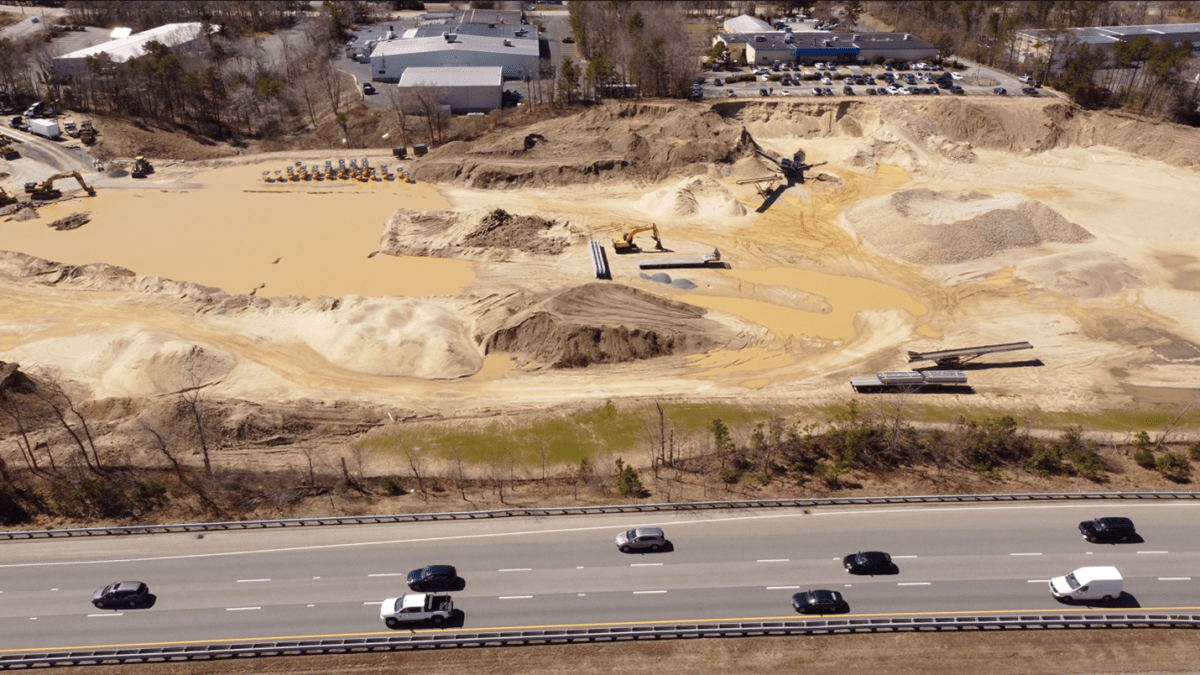I am sure we have all seen them. Driving south towards the old exit 5 and boom, there they are: huge, open, ugly pits. Expansive open fields, devoid of life and empty except for one thing- sand. Lots and lots of sand. Maybe it annoys you, maybe not. Maybe, though, you continue to notice. You begin to spot more sand pits. Perhaps you begin to realize how Plymouth, once a town covered in hills, has begun to flatten out.
These pits are caused by sand mining. If an area is chosen to be mined, the land is completely stripped and left bare. Once an area has been mined, very few nutrients are left behind, preventing anything from growing there again within a human lifetime. According to the Community Land and Water Coalition, there has been an estimated 2,500 acres of open space destroyed due to sand and gravel mining.
Southeastern Massachusetts contains some of the highest concentrations of biodiversity in the state. Yet, six of its towns – Carver, Kingston, Plympton, Plymouth, Wareham, and Middleborough- are on the top 20 list of municipalities with the highest rates of loss of open space in Massachusetts from 2012-2017, according to Mass Audubon’s 2020 Losing Ground Report. One of the biodiverse ecosystems located here are the Atlantic Coastal Pine Barrens, an ecosystem so rare that only three remain on the planet. Over 200 protected species rely on these ecosystems. These are the ecosystems that are disappearing, being ripped up and destroyed for the sand mining industry.
Sand mining has the potential to damage our drinking water source. Over 200,000 people receive water from the Plymouth-Carver aquifer. According to the Environmental Protection Agency in its Safe Drinking Water Act designation in 1990, the Plymouth-Carver aquifer is “highly vulnerable to contamination due to its geological characteristics… the region’s aquifer is a resource that fully deserves efforts to protect it”. When the land is clear cut to allow for mining to go on, there are no trees or gravel layer left behind to provide filtration or protection. Without this protection, the aquifer is placed at a much higher risk for pollution.
Sand mining also directly impacts human health. Most of the sand being mined contains silica, a carcinogen. Wind blows through these wide-open pits, picking up the sand and blowing it freely through nearby areas. Sand blows in through open windows and covers vehicles and cars. Mining extraction processes cause nearby homes to shake, and roads are jammed with traffic going to and from the sites.
So how are these companies getting away with changing the towns’ topography and hurting the environment? By claiming to be “cranberry agriculture”. With laws not being properly enforced, permits are handed out for areas designated as protected and land around drinking water wells. One such example is the mining operation owned by A.D. Makepeace on Federal Road in Carver, which exists inside the protected water supply area.
Now, there is a 33-acre parcel of land covered in forest in Cedarville that is at risk of being mined. The land is the site of the first government established “Indian Reservation” in the US, an archaeological area that is one of the most significant to Native Americans. It is also marked as a priority habitat for rare species and includes the rare Pine Barrens Forest. Ej Pontiff, a sand mining operator, is said to have purchased the land. He plans to strip the site completely. Plymouth must say NO to this proposed sand mine. The town selectboard must stop rolling over and allowing these companies to take advantage of our land, ruining our landscape, and hurting our environment. If you care about our air and water quality, then you should care about these shady mining operations.
I have read this information and more in the “Sand Wars in Cranberry County” report compiled by the Community Land and Water Coalition. It is an extremely eye-opening read, and one that I strongly encourage every resident to examine. You can find it here.
– Kayla Glynn

